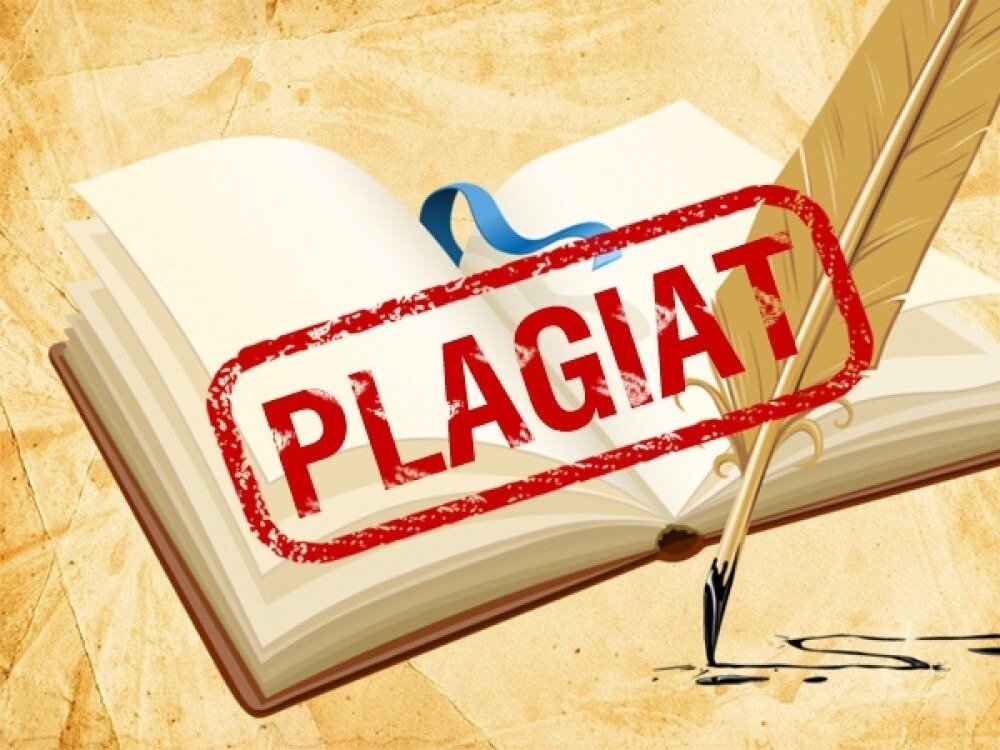Hi friends!✌️ How is your mood? I am happy to report that I completed a number of tasks step by step and continue to do it with pleasure. I completed achievement 1, you can see in my introductory post. I also completed Achievement #2 and am excited to start Achievement #3 in this post.

"Plagiarism"
is one of the most frequently used words by novice authors. Here is the fear for their hard-earned, hard-won works ("What if they steal it ?! "), and the fear of being in an awkward position ("What if I accidentally use someone else's idea or plot in my work, and I will be accused of plagiarism?" or even "What if someone has already written on this topic?").
Plagiarism (from Latin plagio - I steal) is a type of violation of the rights of the author or inventor. It consists in the illegal use under one's own name of someone else's work (scientific, literary, musical) or invention, rationalization proposal (in whole or in part) without indicating the source of borrowing. Criminal offense acc. from Art. 146 of the Criminal Code of the Russian Federation.
Consequences of plagiarism?
A Skoltech student who is caught plagiarizing is forgiven for the first time, he simply gets a "0" for the assignment or for the entire course. After the second plagiarism, he is expelled.
I will never take a student or graduate student who is caught plagiarizing into a group. Why should I sit on a powder keg? If we decide together to write an article and a piece of someone else's text is found in it, it will be destructive to my reputation. I had such a situation. We did a good job, the graduate student brought a draft of the material, and I noticed that he had flawless English for several pages. Before that, I corrected page after page, and then suddenly everything is perfect, not a single mistake. It turned out that it was someone else's text. The graduate student flew out of the lab faster than his own screech.
What can Steemit users post?
Users, including me, can publish unique copyrighted content on steemit without any copying from unnecessary sources, as this will entail additional responsibility for the committed actions. If the user has published non-author's content, then he must back it up with a link to the object or a quote, as I wrote just below.
The brain is the most complex organ in the human body. And definitely the most cunning The brain consumes the most energy, changes imperceptibly for a person, likes to sleep alone and much more. We would never know about these things if it were not for research, because the brain tries its best to confuse us. For example, he does not like to solve difficult problems, but at the same time he needs them to stay healthy.
источник
If you look at the source, you will understand where the quote in the text with the description came from.
If you want to include your images in the text, then use the links below. And do not forget to attach links to the sources where the uploaded photo was from, if it is not yours. https://shutterstock.com https://pexels.com https://unsplash.comHow to quote without becoming a plagiarist?
- If you contain someone else's text or its drawing, then highlight it: with quotation marks, a frame, italics. In different sciences, different areas of citation are used, but, as a rule, a lot of attention is paid to them everywhere.
- Be sure to give a link to the source. If this is a publication, then a commonly used bibliographic reference, if an Internet source, a suitable URL.
- If you retell, and do not contain the text verbatim, then again write, whose thought was taken as the basis.
The most common types of plagiarism are:
HYBRID plagiarism - reworked parts of someone else's text, mixed with a direct quotation of the same text.
DUPLICATION, auto-plagiarism, self-plagiarism - the author of the text transfers parts of it into another work of his own.
NAMED, borrowing full name, names of organizations, etc., which have nothing to do with the author's text. Indicating them in your own text as a reference to authority.
CLONING or complete plagiarism, one hundred percent borrowing of someone else's.
KEY, the use of someone else's text with a change in key words, phrases, sentences, but with the preservation of someone else's meaning.
COPYING, direct plagiarism - borrowing part of the text without quoting and indicating the source.
MOSAIC, "patchwork" plagiarism - theft of small parts of someone else's text and "scattering" them in their own text.
PARAPHRASING, the use of someone else's text with a change in some words, syntactic constructions as one's own.
plagiarism of an idea, borrowing an idea and transferring it from someone else's work to one's own.
REMIX, MASHUP, creating unity based on mixing borrowed parts from different foreign texts.
"I have read and understood the Steemit Community Protocol and will try to abide by it to the best of my ability."
I am very grateful to @juichi for the support and looking forward to the next achievement
thanks for the hints @wilmer1988
